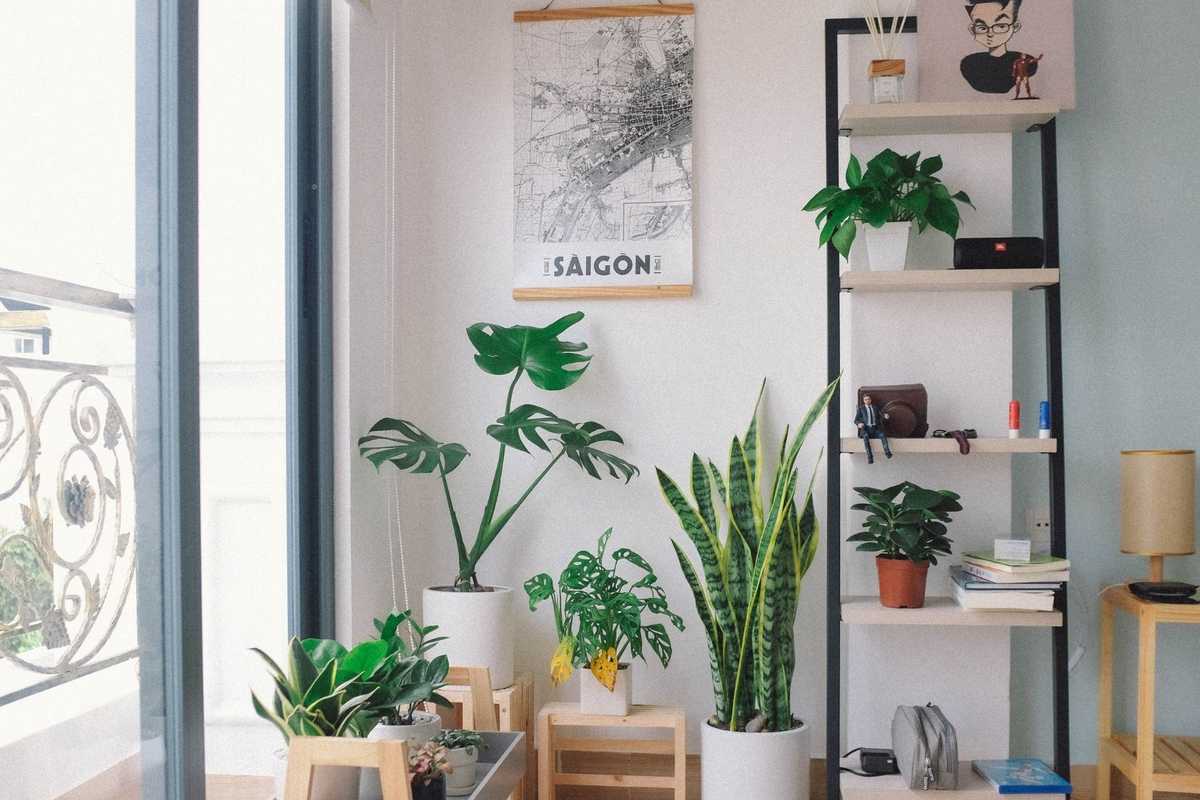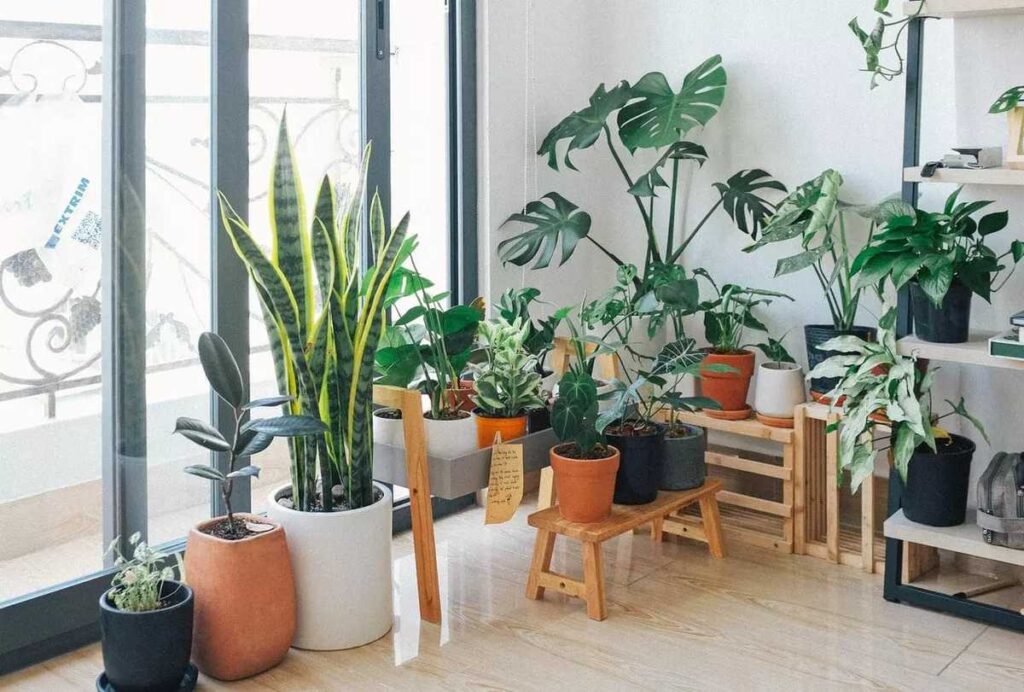
Biophilic design focuses on bridging the gap between humans and nature within our living environments. Its goal is to craft spaces that uplift our mood and foster a sense of unity with the natural world.
Incorporating biophilic design in interior spaces is about recreating the serenity we often feel outdoors. This approach is essentially about “bringing the outside in”.
In this article, we’ll cover 5 different tips that will help you achieve it.
Incorporate a Green Wall
If you’re running out of shelf space for your houseplants, consider creating a vertical garden or living wall in your home. This innovative solution not only showcases a beautiful array of plants but also improves air quality.
However, it’s important to ensure that the chosen wall or ceiling can bear the weight of the plants and their support structures. You should also consider factors like sunlight exposure and water access.
Here are the various types of green walls you might explore:
- Green Façade –This involves growing climbing plants or vines directly against the wall or on a trellis. It’s a natural way to create a green wall, ideal for outdoor spaces.
- Modular Living Wall – These are panels pre-cultivated with plants that can be mounted onto a wall. They usually come with a built-in framework, irrigation system, and root barrier, making them a comprehensive solution.
- Green Wall Pocket System – This system involves attaching pockets or planters to the wall. It allows for a lot of flexibility in terms of plant choice and layout, perfect for customizing your green wall.
- Hydroponic System – Ideal for indoor settings, this soilless system uses a recirculating irrigation method. It’s great for places with limited soil access.
Each of these systems offers unique benefits and can be chosen based on your space, care ability, and aesthetic preference.
Go for Organic Materials

Another tip is to incorporate natural materials like wood, bamboo, or stone in your interior design to add warmth and texture and create a natural feel in your home.
Limestone flooring, for example, is an eco-friendly and abundant material, making it a sustainable choice. For furnishings, consider natural fabrics like linen for sofas and wood for tables or shelves.
Adding woven textiles, such as jute or sisal rugs and woolen blankets in natural tones, further enhances the space with texture and a connection to nature.
Let Natural Light In
Maximizing natural light in your home can have significant benefits.
If you’re remodeling or extending, consider adding large windows, skylights, or light wells to enhance daylight exposure. Natural light not only brightens a space but also helps regulate circadian rhythms and can boost mood, which is particularly beneficial for those with Seasonal Affective Disorder (SAD).
If installing new light sources isn’t feasible, simple changes can still make a big difference. Replace heavy drapes with lighter voile, sheer fabrics, or blinds to let in as much daylight as possible.
In areas like the kitchen, consider removing an upper cabinet and replacing it with floating shelves. This can open up the space to make it feel airier and more illuminated.
These steps can significantly increase natural light in your home, creating a more pleasant and health-friendly environment.
Take Advantage of Natural Scents
Using essential oils or natural scented candles is a wonderful way to bring the calming aromas of nature into your home. Scents like lavender, eucalyptus, or citrus not only create a tranquil atmosphere but also evoke a sense of relaxation.
Essential oils are potent plant extracts offering a variety of fragrances. Here are some ways to use them:
- Add a few drops of essential oil to a diffuser to gently spread the scent around the room.
- Make your own potpourri with dried flowers, herbs, and citrus peels. Enhance it with a few drops of essential oil for a more robust aroma.
- Mix essential oil with water in a spray bottle to create a natural fabric spray. Lightly mist it onto curtains, pillows, or linens to freshen up with a natural scent.
These methods can infuse your living space with pleasant fragrances which contributes to a more serene and inviting home environment.
Introduce Indoor Plants

Lastly, you can introduce indoor houseplants to enhance the aesthetic of your home. Not only that, but they also bring with them a host of benefits. For one, they improve air quality, create a soothing atmosphere, and cater to our innate connection with nature, known as biophilia.
It’s worth noting that plants absorb carbon dioxide and release oxygen, boosting indoor oxygen levels. They also filter common toxins from the air.
Through transpiration, they naturally release moisture vapor which helps maintain indoor humidity levels. This is especially beneficial in dry conditions as it helps prevent dry skin and respiratory issues.
Moreover, scientific studies have shown that indoor plants can reduce stress, lower blood pressure, and decrease anxiety, enhancing overall mental health.
When choosing houseplants, you want to consider your home’s lighting conditions and your care preferences. Low-maintenance plants like the Snake Plant (Sansevieria) and Spider Plant (Chlorophytum Comosum) are great choices for beginners and are effective at purifying the air.
These plants require minimal care, thriving in various light conditions with infrequent watering, yet they significantly contribute to a healthier and more pleasant living environment.
